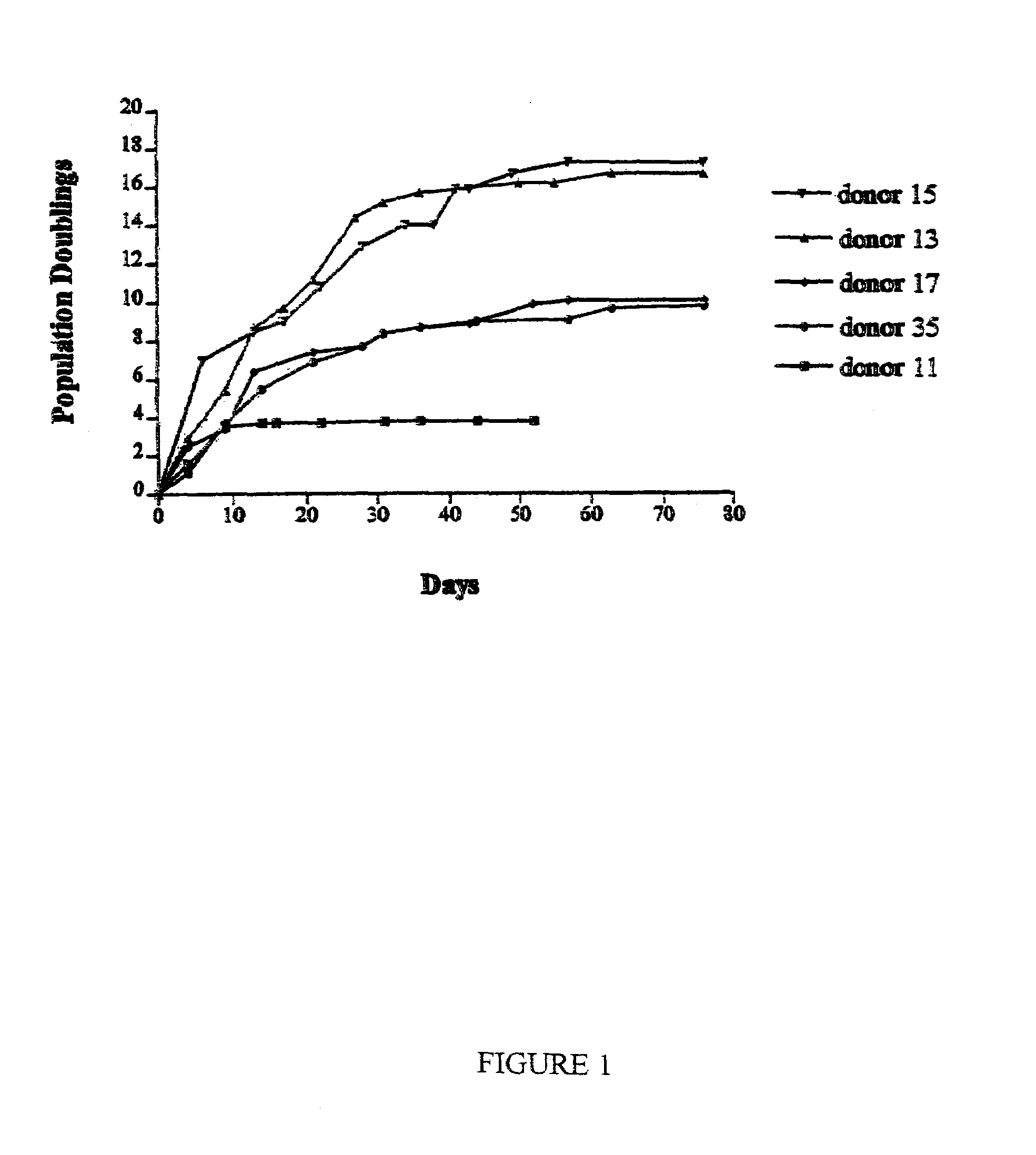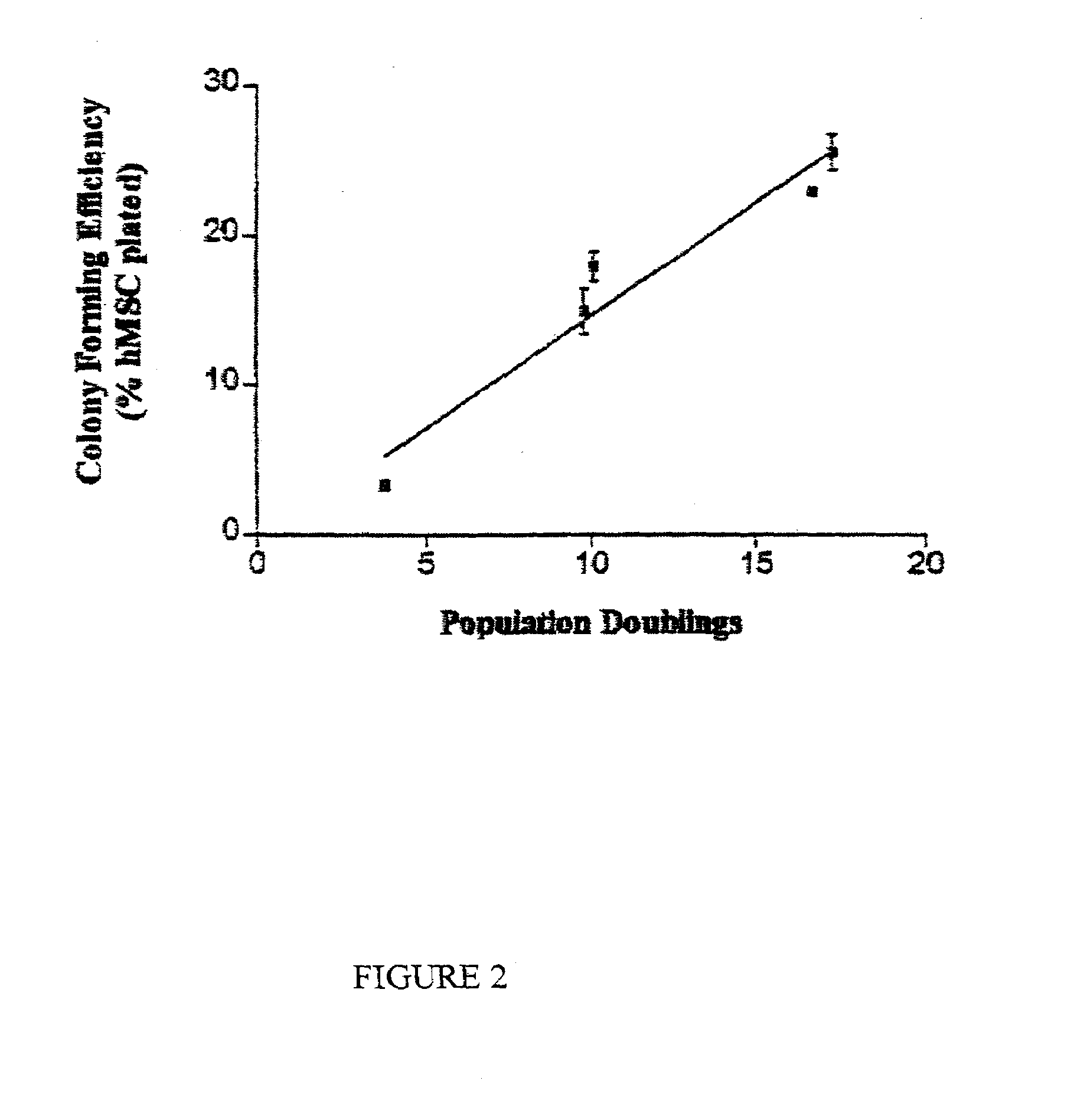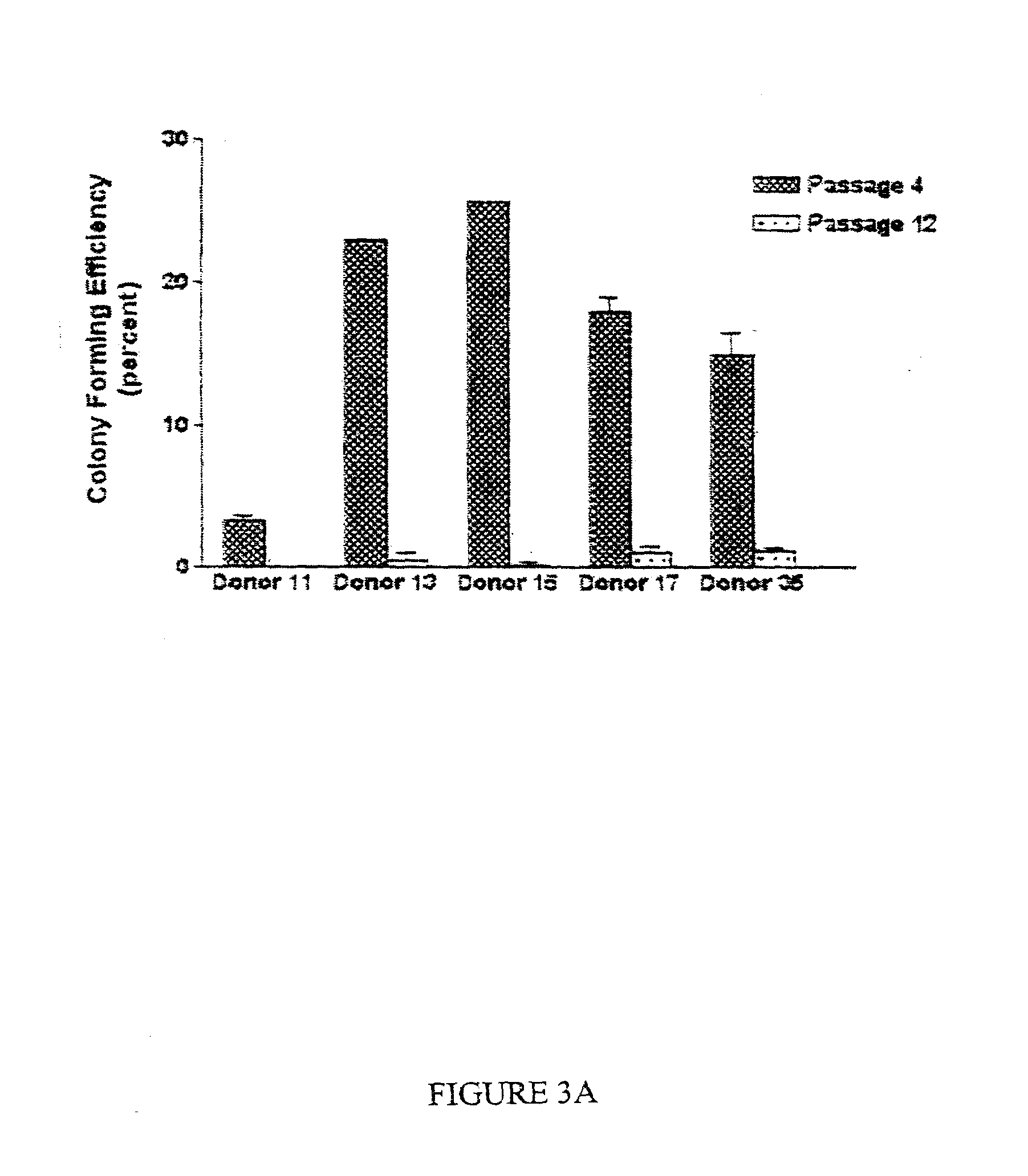Isolation and expansion of human marrow stromal cells
a technology of stromal cells and human marrow, which is applied in the direction of skeletal/connective tissue cells, drug compositions, genetic material ingredients, etc., can solve the problems of difficult to obtain cells for infusion, no longer present beneficial effects, and insufficient behavior of cells infused into nervous system tissues, etc., to enhance the in vitro proliferation of isolated human marrow
- Summary
- Abstract
- Description
- Claims
- Application Information
AI Technical Summary
Problems solved by technology
Method used
Image
Examples
example 1
Propagation and Senescence of Human Marrow Stromal Cells in Culture
[0125]Marrow stromal cells (MSCs) were isolated from bone marrow aspirates obtained from the iliac crest of normal volunteers. The cells were isolated by virtue of their ability to adhere to plastic, passaged in culture, and stored frozen. Some samples expanded through over 15 cell doublings from frozen cell stocks. Other samples ceased replicating after about 4 cell doublings.
[0126]The data disclosed in this example demonstrate that replicative potential of the cells in culture was best predicted by a simple colony-forming assay in which samples from early passages were plated at low densities of about 10 cells per square centimeter. Samples which exhibited high colony-forming efficiency exhibited the greatest replicative potential. Colonies obtained by plating early passage cells at low density varied in size and morphology. Large colonies readily differentiated into osteoblasts and adipocytes when incubated in the...
example 2
Method of Isolation and Expansion of Human Marrow Stromal Cells in Culture
[0159]The data disclosed in this example demonstrate that a small sample of human bone marrow can be used as a source of stem-like cells that are progenitors of cells found in a variety of tissues, including bone, cartilage, muscle, lung, and central nervous tissue. In this example, a method of isolating and expanding human marrow stromal cells (MSCs) is described. Summarily, the method comprises removing a bone marrow sample from a donor (e.g., bone marrow obtained in an aspirate of a human iliac crest, performed under local anesthesia as an outpatient procedure). MSCs are isolated from the bone marrow, and can be cultured under conditions describe in this example in order to increase the number of cells. Using this method, very large numbers of cells can be isolated for use, for example, in a variety of cell and gene therapy applications.
[0160]The data disclosed in this example demonstrate that plating MSCs ...
example 3
MSCs Cultured at a Low Initial Cell Density Produce One or More Growth Factors
[0174]The data disclosed herein, for example in FIG. 12, disclose that the rate at which the MSCs grow after sparse plating (i.e., from about 0.5 to about 3 cells per square centimeter) is greatly influenced by at least one component which the MSCs secrete into the culture medium. In FIGS. 12A-12E, MSCs were plated at selected initial cell densities of 0.5-6 cells per square centimeter. The plates were incubated with complete medium for 12 days, and then washed using PBS. The cells on the plates were stained for 10 minutes with Crystal Violet and methanol in order to visualize colonies.
[0175]As indicated in FIGS. 12A-12C, MSCs plated at an initial density of 0.5-3 cells per square centimeter gave rise to numerous easily visualized colonies. When MSCs were plated at an initial cell density of 6 cells per square centimeter (i.e. as in FIG. 12D), MSC colonies were small (i.e. about 10-100 cells) and could not...
PUM
| Property | Measurement | Unit |
|---|---|---|
| diameter | aaaaa | aaaaa |
| temperature | aaaaa | aaaaa |
| temperature | aaaaa | aaaaa |
Abstract
Description
Claims
Application Information
 Login to View More
Login to View More - R&D
- Intellectual Property
- Life Sciences
- Materials
- Tech Scout
- Unparalleled Data Quality
- Higher Quality Content
- 60% Fewer Hallucinations
Browse by: Latest US Patents, China's latest patents, Technical Efficacy Thesaurus, Application Domain, Technology Topic, Popular Technical Reports.
© 2025 PatSnap. All rights reserved.Legal|Privacy policy|Modern Slavery Act Transparency Statement|Sitemap|About US| Contact US: help@patsnap.com



